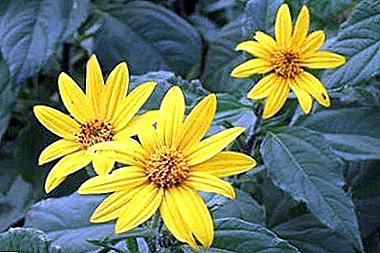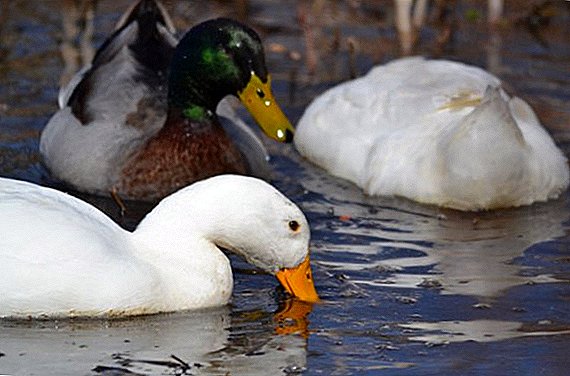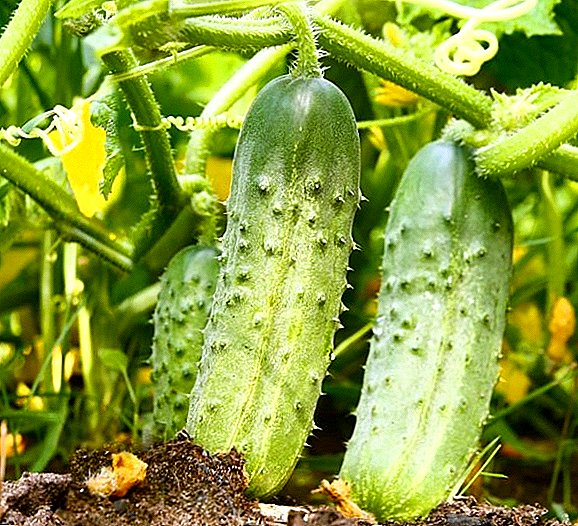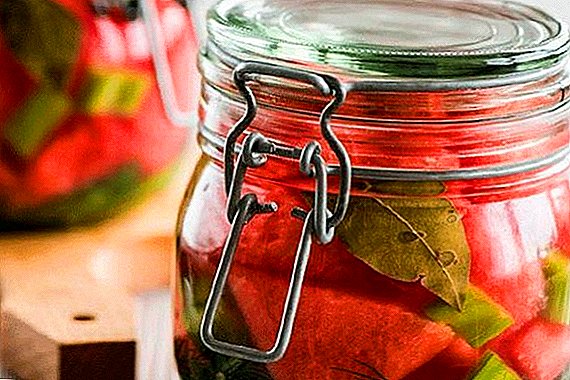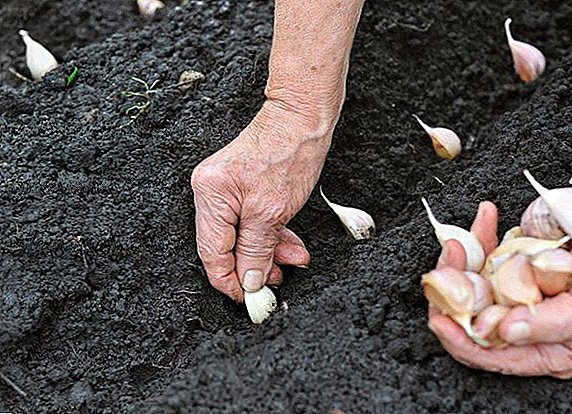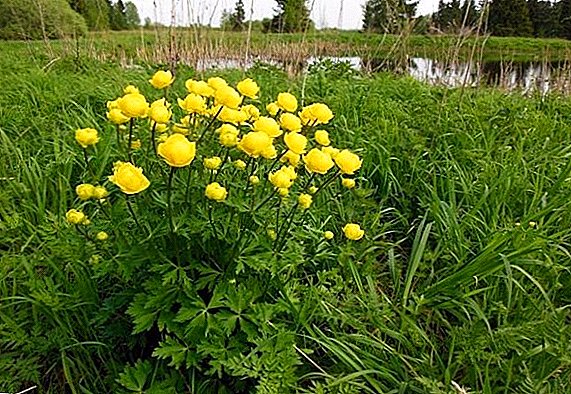 Fans of landscape design in the style of "country" can not like this unpretentious plant with superbly bright yellow flowers, which can become a real decoration of your site, especially if it is located near the reservoir.
Fans of landscape design in the style of "country" can not like this unpretentious plant with superbly bright yellow flowers, which can become a real decoration of your site, especially if it is located near the reservoir.
The Latin name of the European bathing place is "Trollius europaeus". This perennial can be found throughout the territory of the same name of the world - from Great Britain to the Ural ranges and from the Arctic to the Mediterranean Sea. Depending on the growing conditions, the appearance of Trollyus can vary from low bushes with a height of a couple of tens of centimeters (grow mainly in the tundra) to luxurious meter thicket in southern regions with sufficient humidity.
Did you know? Up to twenty beautiful tender flowers can be simultaneously blossomed on one plant, therefore the glades covered with a bathing suit look simply inexpressibly beautiful!
Trollius: why the flower has such a strange name
 The story of the name of the bathing place "Trollius", that is, the "troll", is connected with such a beautiful legend that, having recognized it, every summer resident will definitely want to acquire this flower in his area.
The story of the name of the bathing place "Trollius", that is, the "troll", is connected with such a beautiful legend that, having recognized it, every summer resident will definitely want to acquire this flower in his area.
Did you know? The troll is not only an "Internet provocateur". In the Scandinavian mythology, so called tiny magical creatures, usually evil and doing all sorts of dirty tricks to people.According to legend, once a year, in June, on the night of the full moon, the trolls prepare a magic potion in special round vessels of pure gold. To prevent the dew from falling into the elixir, the fairy-tale creatures place their vessels on high poles, to which the ladder is placed. A magic potion sparkling and sparkling in the rays of the full moon. At dawn, the trolls take the finished elixir into their underground dwellings, and the empty golden vessels remain on the poles. But sometimes one of the magical creatures gets so tired that he falls asleep peacefully at the bottom of a golden flower.
Therefore, if you find a European swimsuit during its flowering and early in the morning, after a full moon, look into the middle of its flower, then, by happy coincidence, there you can find a sweetly sleeping troll.  With the name "bathing" everything is much simpler. Most researchers agree that it is associated with the flowering period of this plant, which captures the ancient Slavic holiday of Ivan Kupala, as well as the day Agrophenes Kupalnitskaya celebrated at the same period.
With the name "bathing" everything is much simpler. Most researchers agree that it is associated with the flowering period of this plant, which captures the ancient Slavic holiday of Ivan Kupala, as well as the day Agrophenes Kupalnitskaya celebrated at the same period.
Hybrid bathing varieties
We have already mentioned above, where the European bathing dwells, and said that this flower looks different in different regions. But there are artificially derived hybrids of this plant. Of the three dozen such varieties, the vast majority can be found in the territory of the CIS countries, but there are varieties of bathing plants, growing even in Asia and America.
In addition to growth, varieties of European, Caucasian, Asian, Altai and Chinese swimsuits differ from each other in texture and colors of flowers (they are presented in a wide palette from white to bright orange and come with ordinary or terry petals).  The most interesting hybrids of Trollyus European include:
The most interesting hybrids of Trollyus European include:
- the yellow ones are Jungar, Canari Bird, Light Ball, Lemon Quinn, Goldkvel, Lidebura, Reader;
- Orange - Altai, Fire Globe, Goliath, Orange Princess, Orange Quest, Orange King.
All of the above varieties Trollyus conventionally classified into cultural and hybrid. A distinctive feature of the bathing vessel is that the care and cultivation of this plant does not require much effort, although, of course, this rule applies if the variety you choose is ideally suited to the climatic zone in which you are going to plant it.
An excellent option for growing in the country will be such perennials: astilbe, bleach, iris, lupine, rudbeckia, host, echinacea. Like a bath, they are unpretentious in their care and will delight with flowering for more than one year.
Selection of a site for planting: soil and lighting requirements
For a European swimsuit, you need to find a site where, during the day, it will not always be under the direct rays of the sun. Shadow is necessary for a plant, but it cannot do without light at all. The ideal option is to protect the flower with the shadow of garden, ornamental trees or higher plants, it will also look good among the picturesque stones of the Alpine hill. 
Important! If you plant a golden beauty in an open area, it will fade faster, and its flowers will not be as large as they could have been on a better site.This plant does not impose too high demands on soil fertility, although it feels best on loam. For its better development, before planting, you can feed the soil with organic matter and mineral fertilizers (nitrogen + phosphorus + potassium), but if this is not done, the plant will still please you with beautiful flowers.
But the bathing vessel, in spite of its name, does not forgive the gardener for stagnation, so if there is high groundwater nearby, pick up another place or make a water outlet.
Partner selection: combination with other plants
European swimsuit looks great in compositions with hot pink spirea, yellow magonia, blue bells, muscarias or edelweiss and any other ornamental plants that bloom in the same period. If you plant "flowers troll" under the lilac bushes, you get an interesting ensemble, besides, tall bushes will cover the plant from the scorching rays of the sun. Ground cover crops can be planted around, such as stonecrop, navel or pinwalk.  Choosing partners and thinking through the compositions is always necessary taking into account the flowering period of all the “participants” of the ensemble, because many of them, when they bloom, completely lose all their attractiveness and can spoil the look of your carefully designed flower bed.
Choosing partners and thinking through the compositions is always necessary taking into account the flowering period of all the “participants” of the ensemble, because many of them, when they bloom, completely lose all their attractiveness and can spoil the look of your carefully designed flower bed.
Planting and breeding
You can grow a "flower troll" on your site in two ways: from seed or by dividing a bush.
Growing from seed
For planting, you need to use only freshly harvested seeds, since it is almost impossible to grow a bathing suit from last year’s seeds - they practically do not sprout. Sowing occurs in the winter in October, and then in April of the following year, under the bright spring sun, young shoots will quickly begin to take shape and gain strength. If necessary, seedlings can be planted so that they are not too crowded.
Important! The swimsuit seeds sown in spring grow very badly, and without preliminary stratification one can get no result at all.Blossom young swimmer begins about the third year of life.
Bushes division
The easiest vegetative breeding method for European Trollyus is dividing a bush. It is recommended to plant the European bathing place in spring or autumn, but in the second case it is better to do it at the very beginning of September, so that by the winter the “flower of the troll” will surely take root, and by next year the growing process should not start from the very beginning. 
Important! Despite the fairly high frost resistance, the fragile young swimsuit may not survive after a harsh winter, so for the first year it is worth taking special care of her.

European bathing: care for "poisonous beauty"
Caring for a bathing suit is not difficult, but in order for it to be pleasing to the eye, it is important to have a good understanding of its character and preferences.
The abundance of irrigation
The amount of moisture bathing is very demanding. Here it is important to “grope” the golden mean: the soil should always remain wet, but without stagnant water. Therefore, the regularity of watering directly depends on external conditions: the hotter the summer, the more often the watering. The Trollyus European difficult to tolerate mistakes made in this part only in the first years of its life.
Soil mulching
Mulching for European Trollyus is optional, although welcome. Mulch protects the ground from drying out, and the owner of the site - from tedious weeding. But, of course, if the bathing house is part of the landscape design, this agrotechnical device may not fit into the big picture, so you should not worry too much about this. 
Did you know? The swimsuit easily tolerates even quite severe frosts, so it is not necessary to cover it for the winter.
Fertilization
As was said, “troll flowers” are not too demanding for the soil, but, of course, for more intensive growth and flowering, plants need additional feeding. It is best to do this at the end of spring, before the plant blooms. It is good for this period to spend two feeding with an interval of a couple of weeks. With gratitude the bathing vessel reacts to nitrophoska (dilute 1 teaspoon per bucket of water), urea (take 1 tablespoon per bucket of water), as well as complex fertilizers for flowering plants. It is useful to fertilize the soil with humus, peat or compost.
Pruning of flowered stalks
In order for the "troll flowers" to develop better, at the end of the growing season the stems are recommended to be radically cut, leaving about five centimeters above ground level. Fading peduncles also need to be cut so that the plant does not lose its decorative effect. 
Pests and diseases
The described species is sufficiently resistant to pests, but here are some fungal diseases that may well cause him serious trouble. Since fighting smut and septoria is almost impossible, in such cases prevention works best. To do this, it is necessary to get rid of dead leaves in time, prune and remove diseased plants in time.
Use in traditional medicine
The bathhouse, in addition to the obvious decorative qualities, has a more important use. Quite strong choleretic properties of this plant can be used in traditional medicine for getting rid of edema and tumors, treatment of diseases of the stomach, kidneys and liver, as well as hemorrhoids and scabies. In the old days, healers even treated scurvy with a decoction of troll flowers.
Thus, the beneficial properties of Trollyus European are not limited to its ability to please the eye at the beginning of summer, and this is an additional reason to replenish its flowerbed or lawn with another interesting plant.


